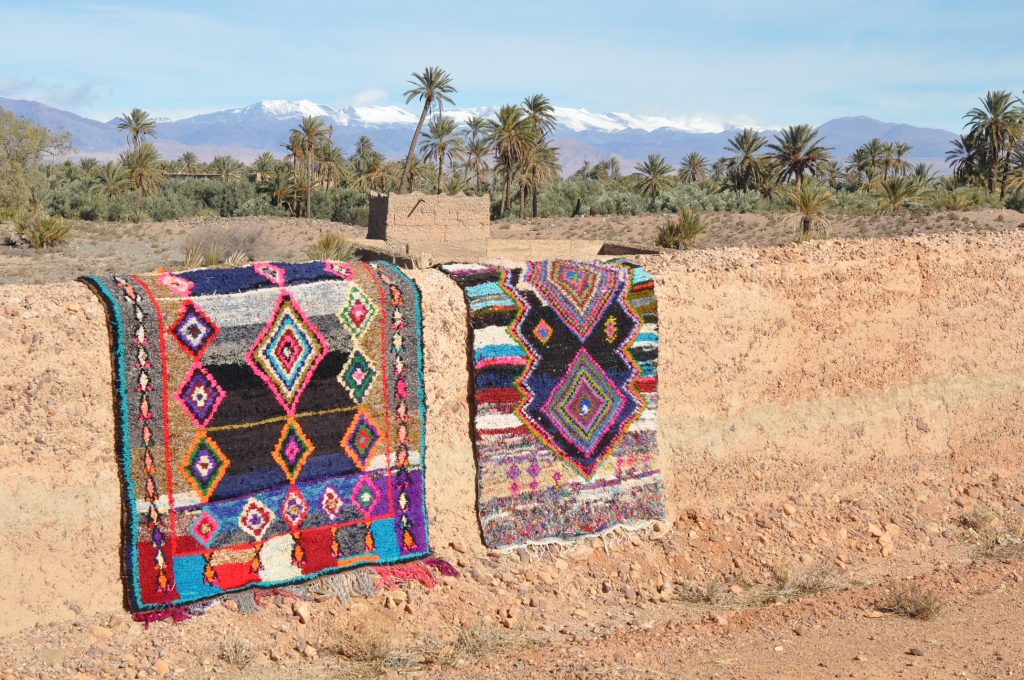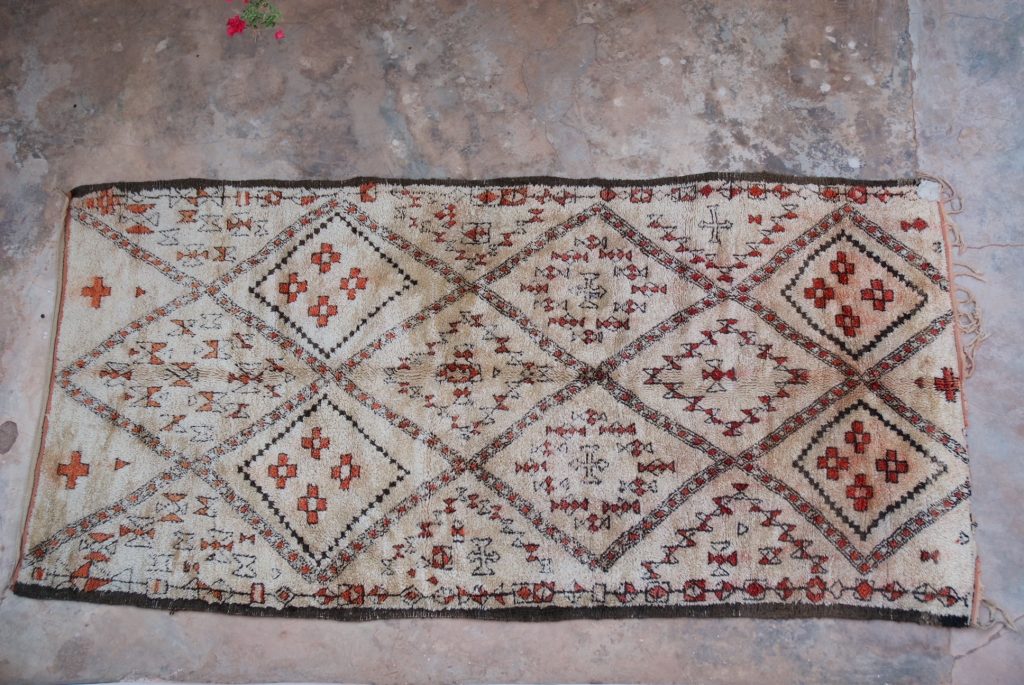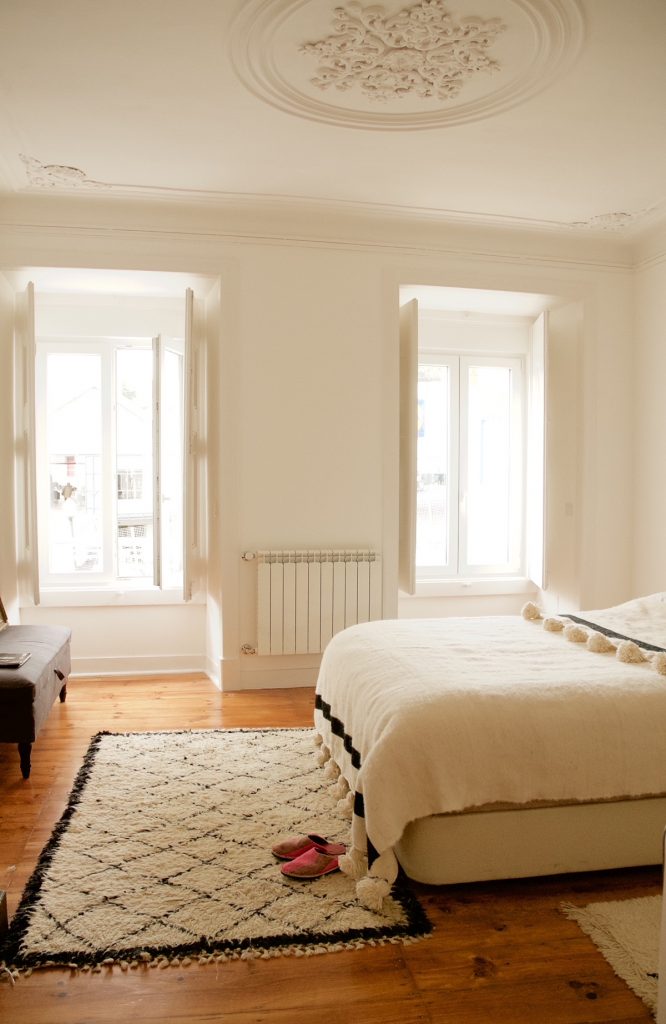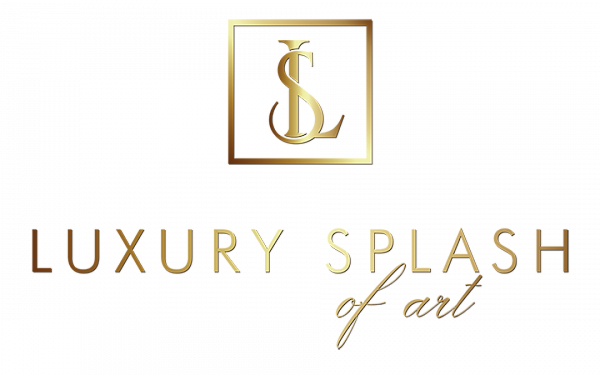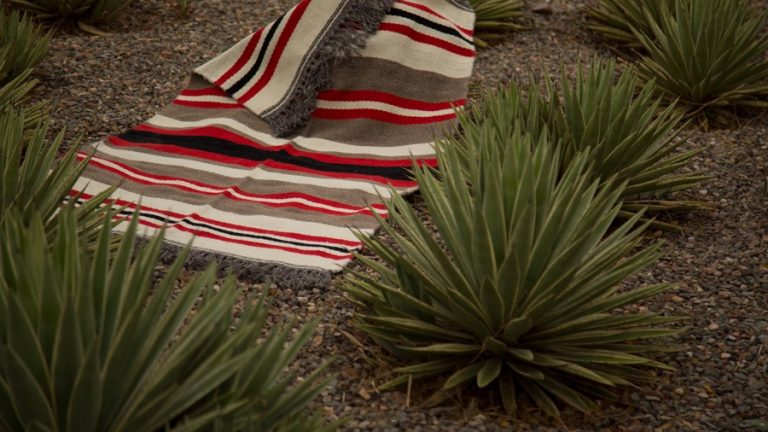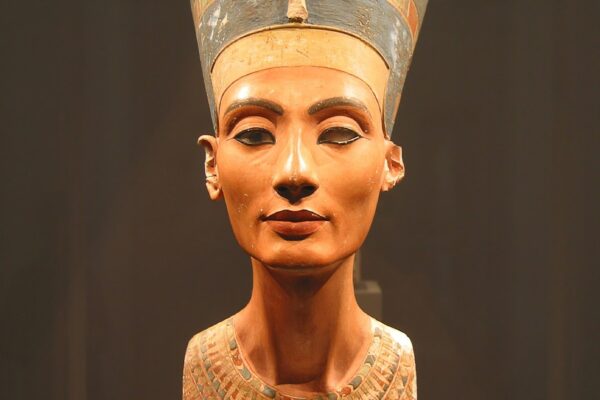A contemporary incarnation of the courageous traders who plied the Silk Road to bring Persian carpets to the West, this adventurer roams deep into the Atlas Mountains to discover antique Berber rugs. No place is too far, no outpost too risky to visit, to value art that will provide a bit of sustenance for those women following a prized tradition.
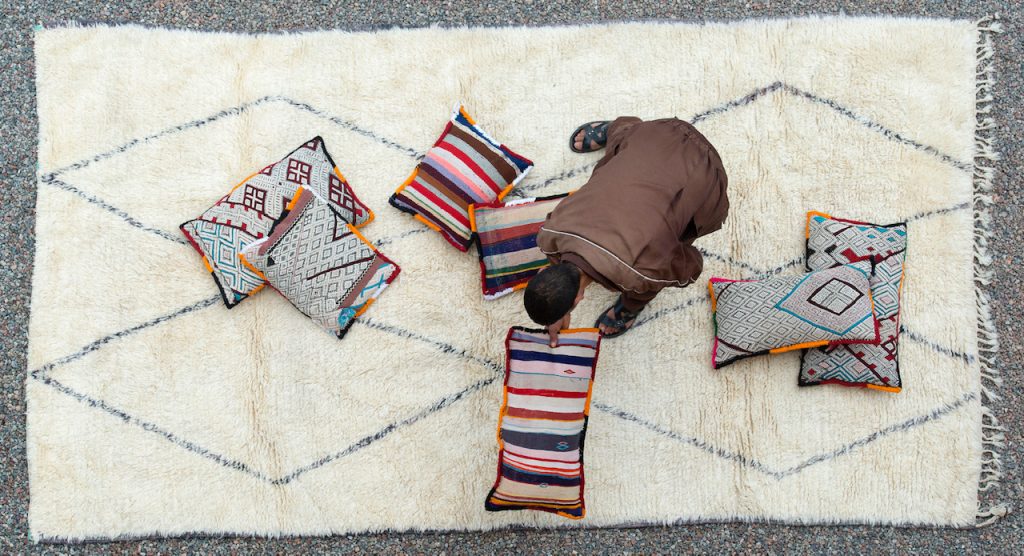
“I have to go to some lost, very remote villages, cooperatives in the mountains, sit with the weavers to find rugs with soul,” explains Beatriz Maximo, who’s been braving treacherous mountain roads for 8 years to acquire exquisite, intricately-woven Beni Ourain and explosively-colored Bouchraouite rugs. “I enjoy hearing stories about families…going to their homes. If I went to souks (in Marrakech) the traders would eat me.”
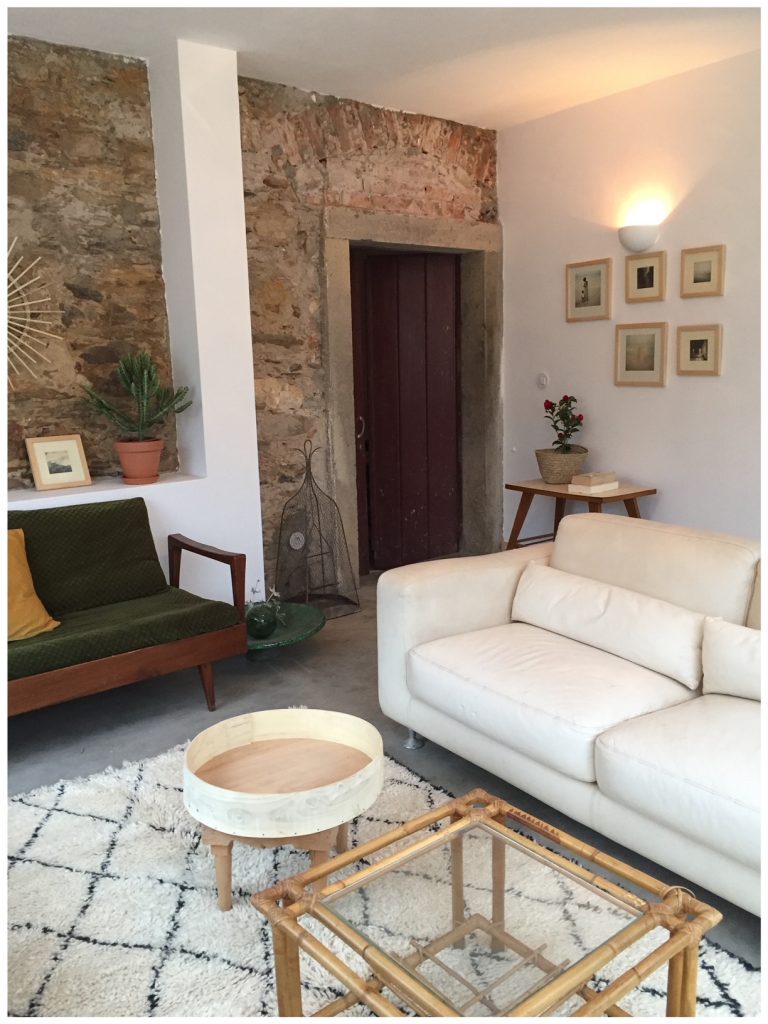
Locating sumptuously-crafted rugs still remains problematic. Due to the rising demand and soaring prices for weavings with “storytelling” symbolism as Bird, Eye, Snake and Fish,” Maximo must confront more than unknown paths and patriarchal customs. Her world has its share of con men, scams, and fake antiques. No easy task, she has to cement relationships with expert weavers, and despite not speaking Arabic, must trek into the Wild.
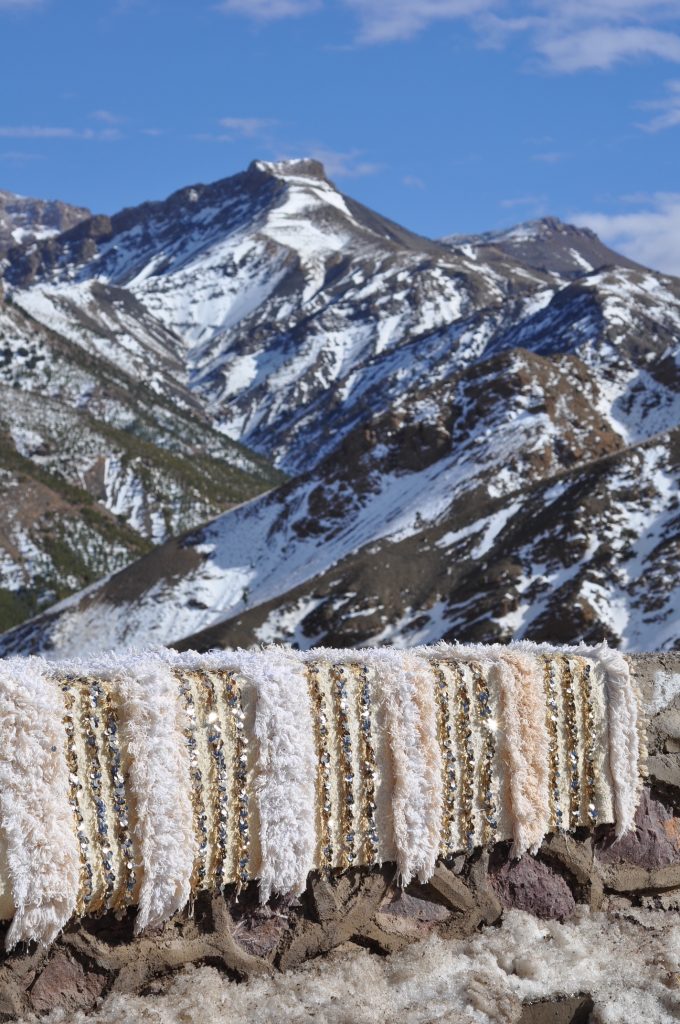
Passionate about rugs, their conveying “history, tales about families, love and desires,” Maximo savors the challenges of being in the hunt. “While it’s difficult to find old rugs, the true story tellers, pursuing such art is very satisfying,” insists Maximo. “There’s always something personal in the rugs, so it’s very gratifying to support these women, and the village cooperatives.“
“Part of the money I make goes back to the weavers, helps them buy wool, in effect allows them to be independent.“ Eyeing a 70-year-old rug in the Kasbah, a muted piece with symmetrical lines and soft natural pigments, she says, smiling, “It’s my way of sustaining their rich tribal cultures.”
